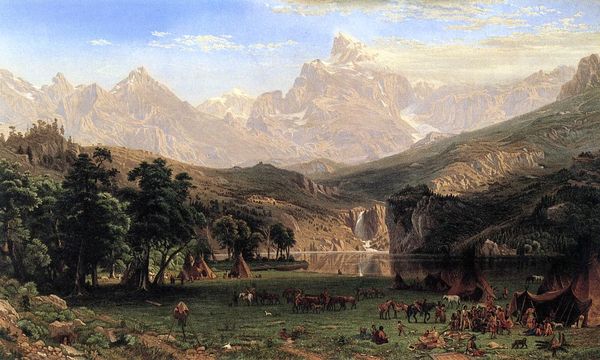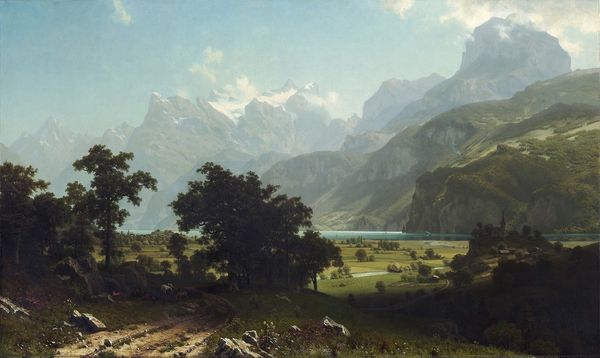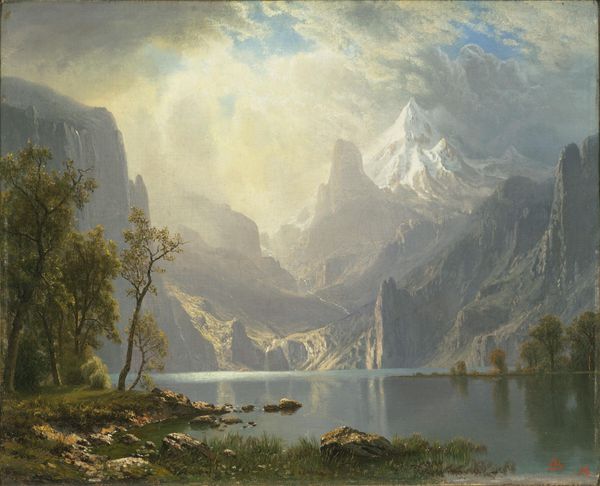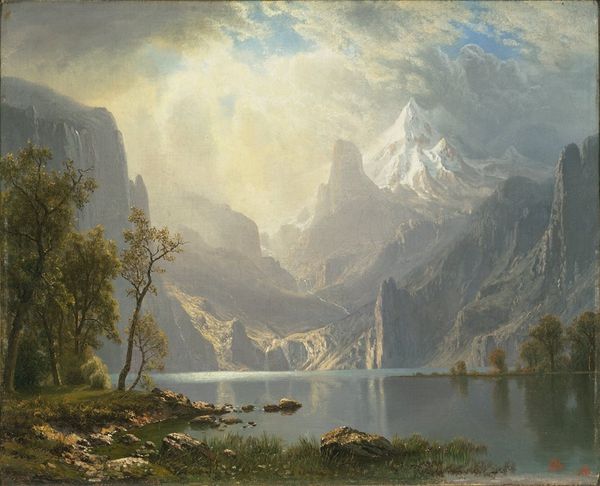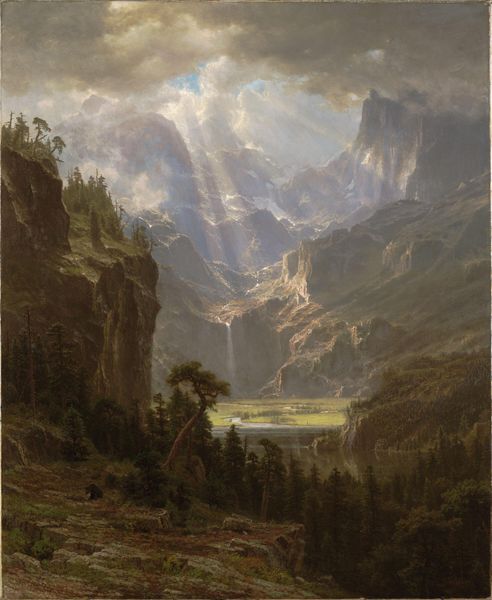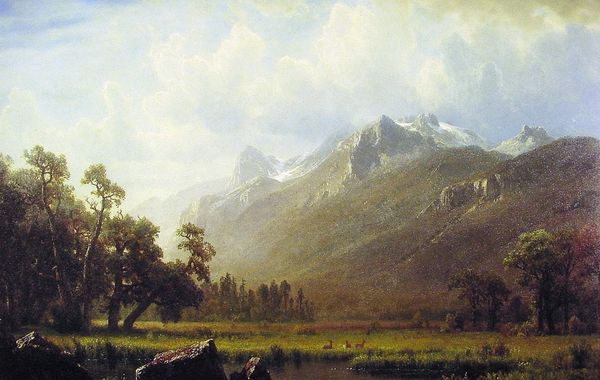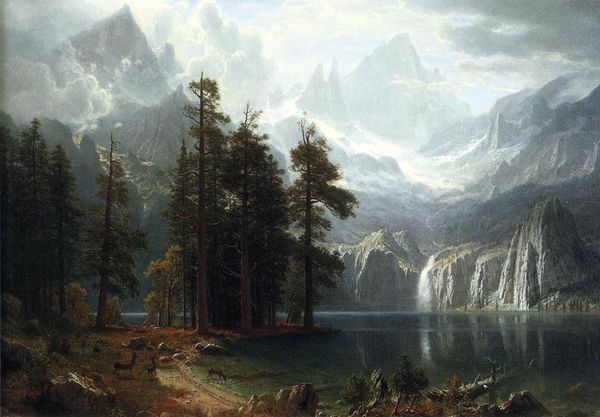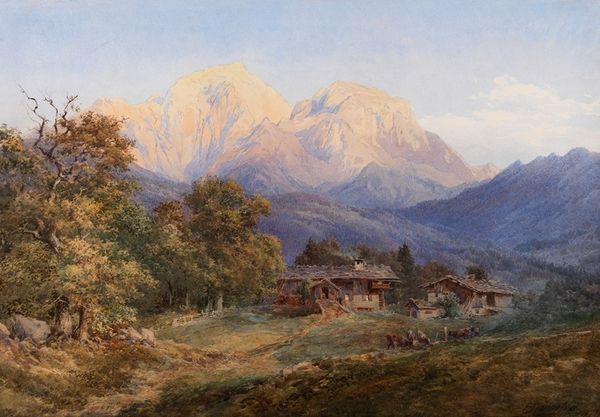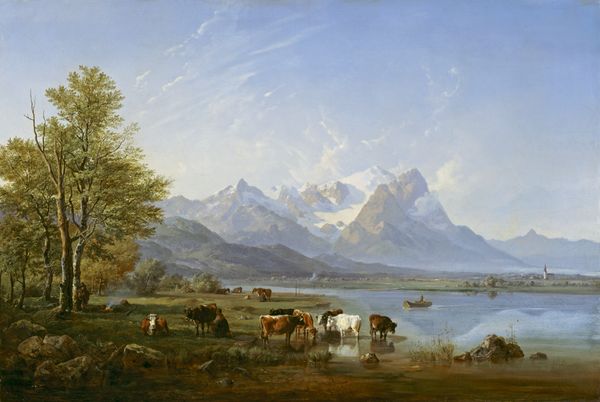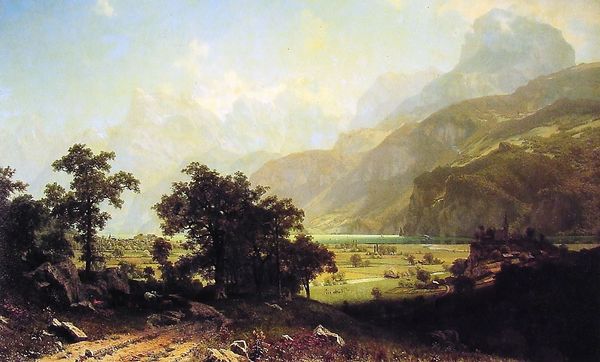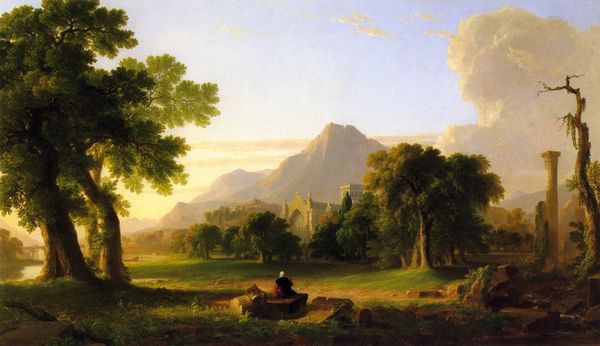
Copyright: Public Domain: Artvee
Editor: Albert Bierstadt’s "The Rocky Mountains, Lander's Peak," painted in 1863 with oil on canvas. It is so majestic and serene. How should we understand this work in its broader context? Curator: Let’s think about it as more than just a pretty picture. Look at how the Indigenous people are depicted in relation to the vast landscape. Does it feel balanced, or does one dominate? Editor: They do seem somewhat small compared to the towering mountains. Curator: Exactly. Think about the historical context – Manifest Destiny, westward expansion. How does this painting play into those narratives? The romanticized depiction of the landscape often served to justify colonization, obscuring the violence and displacement inflicted on Indigenous communities. Editor: So, the beauty is almost… misleading? Curator: It’s a calculated beauty. Bierstadt was not just painting a landscape; he was selling an idea of the American West as an unspoiled paradise, ripe for the taking. Where does this leave Indigenous people? Are they part of nature, props for a scene, or owners of the scene. The answer may lie with Bierstadt himself and how we should be critical of history painting and landscape art. Editor: It definitely gives me a different perspective, knowing the background. I can’t unsee that imbalance now. Curator: Art always exists within a web of power relations. Considering those dynamics is crucial to understanding its meaning and impact, especially as history paintings tend to skew perspective. Editor: Thanks, I'll certainly view paintings like this more critically from now on. Curator: I’m glad this deepened your understanding, It is really essential for any serious student of Art History!
Comments
No comments
Be the first to comment and join the conversation on the ultimate creative platform.
